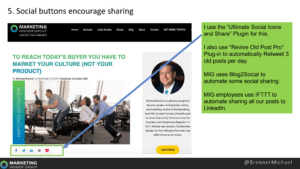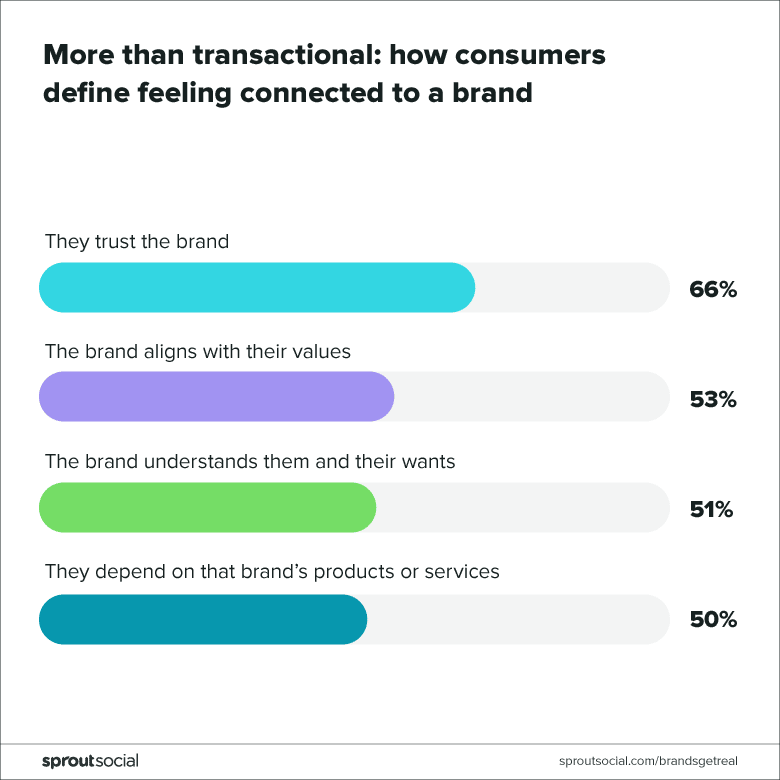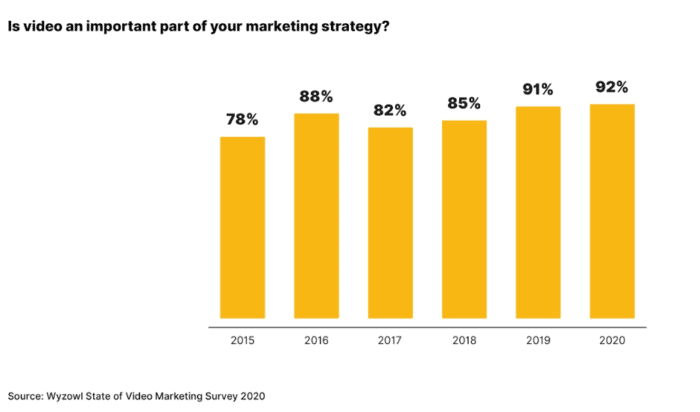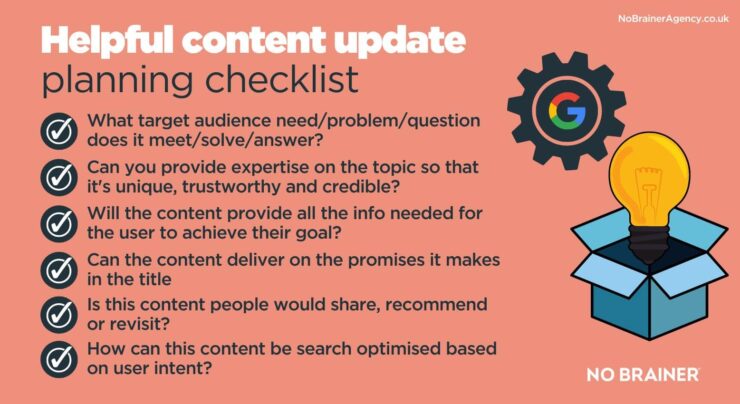Utilizing CRM for email marketing can significantly enhance your brand's outreach efforts by combining relationship management with targeted messaging. Integrating email marketing with CRM can lead to improved audience segmentation, personalized communication, and enhanced campaign tracking, resulting in better engagement with customers.
Step 1: Selecting the Right CRM Platform with Email Marketing Capabilities
Choosing a CRM platform that offers integrated email marketing tools is crucial for a successful strategy. Look for platforms that provide features such as segmentation, automation, and detailed analytics. Popular choices like HubSpot, Salesforce, and Zoho offer seamless integration of CRM and email marketing for effective management.
Key Features to Look For:
- Segmentation: Ability to categorize contacts based on behavior, preferences, or demographics.
- Automation: Tools for sending triggered emails based on specific customer actions.
- Analytics: Reporting features for tracking important metrics like opens, clicks, and conversions.
Step 2: Importing and Segmenting Contacts for Targeted Messaging
After selecting a CRM platform, the next step involves uploading and segmenting your contact list. Proper segmentation allows you to send personalized messages to different groups, ensuring relevance and maximizing engagement.
Process of Importing and Segmenting Contacts:
- Upload Contacts: Import existing contacts directly into your CRM system.
- Create Segments: Divide contacts into groups such as new leads, repeat customers, or inactive customers.
- Dynamic Segmentation Rules: Use dynamic lists that update automatically based on customer behavior.
Step 3: Implementing Automated Email Workflows
Automated workflows enable you to engage customers at the right time without manual intervention. Create sequences of automated emails based on customer behavior, such as welcome emails for new subscribers or re-engagement emails for inactive contacts.
Types of Automated Workflows to Consider:
- Welcome Series: Introduce new subscribers to your brand.
- Abandoned Cart Reminders: Encourage customers to complete their purchase.
- Re-Engagement Emails: Target subscribers who haven't interacted with your emails recently.
Step 4: Personalizing Email Content Using Customer Data
Utilize CRM data to personalize your email content based on customer preferences and behaviors. By leveraging data like purchase history and browsing activity, you can create tailored messages that resonate with your audience.
Tips for Effective Personalization:
- Dynamic Content: Display different content based on user behavior or interests.
- Personalized Greetings: Address subscribers by their names for a personalized touch.
- Product Recommendations: Offer relevant suggestions based on past interactions.
Step 5: Creating Mobile-Friendly Email Templates
Given the prevalence of mobile email usage, designing mobile-friendly templates is essential. Ensure your email templates are easy to read on both desktop and mobile devices, with clear fonts and simple layouts.
Essential Elements of Mobile-Friendly Templates:
- Responsive Design: Adjusts layout for different screen sizes.
- Concise Subject Lines: Keep subject lines short for mobile users.
- Single-Column Layouts: Opt for simpler layouts for better mobile readability.
Step 6: Testing and Optimizing Email Campaigns
Regular testing and optimization help improve the performance of your email campaigns. Conduct A/B tests on elements like subject lines, call-to-action buttons, and send times to identify what resonates best with your audience.
Elements to Test for Optimization:
- Subject Lines: Experiment with different tones and styles.
- Email Timing: Test various days and times for sending emails.
- Visual Elements: Try different images and button designs.
Step 7: Monitoring and Analyzing Performance Metrics
Analyzing email performance metrics provides valuable insights into the effectiveness of your campaigns. Focus on metrics like open rates, click-through rates, and conversion rates to understand subscriber engagement and campaign success.
Key Metrics to Evaluate:
- Open Rate: Indicates the effectiveness of your subject lines.
- Click-Through Rate (CTR): Measures the engagement with your content.
- Conversion Rate: Tracks actions taken after opening the email.
Step 8: Scheduling Email Campaigns for Consistent Engagement
Consistency is key in CRM email marketing. Establish a schedule that aligns with your audience's preferences and marketing objectives. Avoid overwhelming subscribers with too many emails or losing engagement with infrequent communication.
Recommended Scheduling Strategies:
- Weekly Newsletters: Keep subscribers informed about new content or promotions.
- Monthly Recaps: Summarize key updates or top-performing content.
- Seasonal Campaigns: Send targeted promotions during holidays or special events.
Simplify Your Email Marketing Strategy with CRM Integration
By leveraging CRM for email marketing, brands can establish meaningful connections with their audience. Through automated workflows, personalized content, and strategic testing, businesses can achieve successful outreach that resonates with subscribers. CRM email marketing streamlines campaign management and fosters stronger relationships with customers, ultimately enhancing engagement and driving conversions.
Frequently Asked Questions
What are some examples in indirect marketing?
You can think of indirect marketing methods that you could use to promote your company. A social media campaign might encourage people to share photos of themselves using your product. This would help spread the word about your brand.
You could advertise in the local paper if your auto shop is open. This would encourage people to take their cars to your shop instead of visiting other shops.
Another example is to send coupons to customers via e-mail or place ads on bulletin boards at public locations.
Indirect marketing works well because it doesn't cost much money.
It takes time to build trust between people so be patient when you promote your business.
Keep track of the effectiveness of your campaigns. Try measuring the number of leads generated from each method.
This will allow you to see which methods are most effective for your business.
What eCommerce Marketing Strategy Should I Use?
There are three types in eCommerce marketing:
- Direct marketing
- Search Engine Optimization (SEO).
- Social Media Marketing
Direct marketing involves sending emails directly to potential buyers. Emails could include coupons, discounts, or special offers. This marketing strategy aims to build customer loyalty.
Search engine optimization improves the rank of your website on search engines such Google, Yahoo, Bing, etc. If your website ranks near the top for searches related to keywords, you will get more traffic.
Social media marketing is done using websites like Twitter, Facebook and Pinterest. To connect with your audience. It's simple to set it up, free and very effective.
Each of these options has its pros, and cons. SEO takes effort and time, while direct market requires less effort. If you are only focused on one aspect of eCommerce marketing, you may not see the full benefit. We encourage you to combine multiple marketing channels.
Emails could promote your products. This would help you to rank highly in search engines. You could also advertise on social media, and then link back to your website from these pages.
There are many marketing options for your eCommerce store. Pick the best for you and make sure to implement them regularly. Good luck!
What are the four functions of marketing?
Marketing is about creating demand for products, services, and other goods.
It communicates information about an organization's offerings, and values and how those affect customers' lives.
Marketing also stimulates interest in an offering, builds awareness of the offering, and ultimately drives action (or purchase) in response to an invitation to act.
These are the four functions of marketing:
- Creating Demand – This includes developing relationships with potential buyers and convincing them that there is value in purchasing your product or service.
- Stimulating Interest: This refers to increasing awareness among consumers about your product/service.
- Building Awareness – This refers ensuring that customers know about your product or services and are able to decide whether they want to buy them.
- Drive Action – This refers to ensuring that customers purchase your products and services after they become aware of them.
What is eCommerce Marketing?
Ecommerce marketing refers to online shopping. It is the act or selling products over the internet. This could include purchasing goods from companies and selling them on the internet. If you're an individual seller, this would also include selling on eBay. You could also set up a business to sell your goods for profit. The key point here is to make money by selling items online.
Here are some more details regarding eCommerce marketing:
It is important to determine what kind of products you wish to sell in order for your eCommerce site to be successful. Then, you should decide whether you want to offer only one item (like a book) or multiple kinds (such as books and DVDs).
Once you know the product you offer, you will need to find a supplier. A supplier is a company that makes and sells the product you want to sell. If you wanted to start selling greeting card, you would first need to find suppliers that make and sell them.
Once you have found a supplier, you need to make a website that will display the products for buyers. Some suppliers provide templates; others require that you design your template. Once you have your website online, you need to promote it to draw visitors. This involves posting articles on forums and websites, advertising on Google Adwords and emailing relevant contacts.
When it comes to marketing your eCommerce company, there are many channels. These include search engines, email, social networks, mobile apps, and search engines.
- Email marketing is a popular choice for many businesses. It is cost-effective, simple to implement, and produces results. But, it takes a lot of time and effort to generate quality leads.
- Search engine optimization is a technique for improving the rank of a website for specific keywords. This is often done via link building, which allows pages to rank higher in search engine results.
- Promoting businesses is becoming more important through social networking sites such LinkedIn and Facebook. Many people use these sites every day to communicate with friends and family. You can get exposure to thousands of new customers if you post interesting articles there.
- Mobile apps are also a valuable tool for eCommerce marketers. People love using their smartphones and tablets to shop. A mobile app lets you reach customers no matter where they are.
In summary, eCommerce has become a big business. There are many avenues to promote your small business. Be wise when choosing an eCommerce marketing strategy to maximize your business's potential.
What are the top 5 social media marketing strategies you recommend?
Social Media Marketing offers a great opportunity to promote your business online. It's a powerful tool to promote brand awareness as well as generate leads and sales. Here are five ways to use social media marketing to boost your business.
- Create a Facebook Fan Page – This allows you to interact directly with customers on Facebook. You can also upload files such as photos and videos.
- Twitter Promote Your Business – Twitter offers a great way to share information and connect people. Increase visibility by using hashtags
- Post Videos on YouTube. Many people enjoy watching these videos. If they like what is shown, they may click to visit you website.
- Host Live Events – Having live events allows you to meet face-to-face with potential clients. They will be able to ask questions about the products and services you offer.
- React to Customer Review – Positive reviews will build trust between you and your clients, which in turn will encourage repeat purchases. Negative comments should be addressed quickly.
How do you build an Ecommerce Marketing Plan
The first step is to identify what you want to sell. You should have a range of products and services that are related to your business.
The second step is determining how much money you need to spend on advertising, promotions, and other marketing techniques. Multi-channel marketing may be necessary, such as email blasts, direct mail, social media, search engine optimization and other methods.
Once you determine how much money your business needs, you can develop a budget for each marketing method. You might want to consult an expert in e-marketing if you aren't sure which marketing strategy is best for you business. They will help you decide which method is right for your business.
Once you have a plan, you can start implementing it. This will make the process much easier if you hire someone to do all or part of the work.
There is no need to start from scratch and reinvent the wheel. Use proven strategies that have worked well for other online retailers. Remember to test everything before making any changes.
It is important to remember that your ultimate goal in eCommerce marketing is to increase profits and sales. Your eCommerce marketing strategy must take into account both short-term goals and long-term plans.
If you're looking for a way to boost your sales, read our article about eCommerce marketing tips. We hope these tips help you to achieve success.
How does marketing fit into business strategy?
Marketing is an essential part of every business strategy. Marketing is essential to any business strategy. Without it, nobody would be able to know about your company. Without sales, marketing would not be possible. Marketing is essential for any business strategy.
Marketing is important, but not everyone gets it. Marketing is often seen as a matter of spending money on advertising campaigns. Marketing encompasses much more than this. Marketing encompasses everything you do to communicate your company's identity and position in the marketplace.
Ask yourself these questions when you think about your company: What image am i trying to portray? What will my customers think of me? How should I present my self to the world?
If you don’t know the answers to these questions, you probably haven’t considered marketing.
Statistics
- Many experts recommend you share 20% of your promotional content and 80% of other valuable content you find. (marketinginsidergroup.com)
- From 2020 to 2022, eMarketer predicts that digital marketing will grow by 36% and take up 54% of marketing budgets! (marketinginsidergroup.com)
- Meanwhile, a PartnerPath poll found that co-marketed ads help 68% of consumers arrive at a buying decision before even speaking to a salesperson. (influencermarketinghub.com)
- A poll earlier this year found that 14% of older Gen Z's had bought an item in the previous six months based on an influencer's recommendation. (influencermarketinghub.com)
- According to statistics, 60% of online shoppers worldwide actively search for coupons before purchasing from a virtual shop. (influencermarketinghub.com)
External Links
blog.hubspot.com
influencermarketinghub.com
neilpatel.com
- How to Use Search Engine Optimization to Build Your Brand
- Marketing Automation: What is it, Examples & Tools [2022]
youtube.com
How To
What is your strategy for marketing?
Are you familiar with the expression, “If they build it, they will follow”?
Well, you're wrong.
Although building something is hard work, it's not enough if you want to attract customers. Internet Marketing Principles are essential to grow your business.
Internet Marketing Principles refer to the guidelines marketers use in creating websites, blogs, emails campaigns, and social media profiles that generate leads, and sales.
If you sell handmade jewelry online, these Internet Marketing Principles will help you drive traffic to your website, capture emails and close the sale.
These are some examples for Internet Marketing Principles.
- Content is king. You need to create compelling content. You will lose credibility as a source for information if you copy content from others.
- Trust builds trust. People prefer recommendations from friends and relatives to Adsense. Make sure you're trustworthy when recommending a product.
- Personalize – People prefer to speak to people, not robots. You want your website to look real and not robotic.
- Offer value – People will only give out free stuff if you feel they are getting something in return. You can give them something in exchange for your contact information.
- Tell stories – Stories are powerful tools for connecting with audiences. They allow you to tell your story and make connections with your audience.
- Giveaways – Give things away to spread brand awareness and build loyalty.
- Call-to-action buttons are important as they prompt users take action.
- Test everything – Testing is critical to ensure your website works properly before launching it live.
- Keep it simple. Sometimes simpler is better than complicated. It is best to keep things simple when possible. A website that is simple to maintain and easy to update will be more successful.
- Clear goals make it easier to measure success.
- Measure everything – It is essential to track your progress toward your goals in order to improve your marketing efforts.
- Focus on conversion. Conversion is turning visitors into buyers.
- Get feedback. It will allow you to improve your marketing efforts.
- Track your results – Tracking your results allows you to identify areas that could be improved.
- Repeat – repetition creates momentum
- Optimize Your Marketing Efforts – Optimization ensures your marketing efforts are efficient.
- Be consistent – Your brand will remain consistent.
- Reward yourself. Rewards can motivate you to do better.
- Learn from others. This is one of the best methods to avoid making the same mistakes again.
- Never stop learning – Always seek out new ideas and techniques.
- Think long-term – Long-term thinking is necessary to achieve sustainable growth.
- Trust your gut – Sometimes intuition is your best guide.
- Every day should be treated as a test. We learn lessons from mistakes, even though they are inevitable.
- Recognize your weaknesses. Knowing your strengths and weak points will give you the insight to how to overcome obstacles.
- Do not let failure discourage you – Everybody fails at least once. But don't let failure discourage you. Keep trying again.
- Take risks – Sometimes it's necessary to take chances in order for you to move forward.
- Enjoy the journey – Enjoying the journey is essential to living a happy life.
- Be passionate – Passion fuels motivation.
- Keep in touch with your authentic self – Building relationships requires you to be yourself.
- Know yourself – Self-knowledge can be essential for self-improvement.
- Find your tribe. It's important to build a support network of like-minded people.
- A vision board is a tool that helps you visualize your future.
- Ask questions. Questions can open up doors to knowledge.
————————————————————————————————————————————–
By: Lauren Basiura
Title: Effective Email Marketing Strategies with CRM: A Comprehensive Guide
Sourced From: marketinginsidergroup.com/marketing-strategy/email-marketing-set-up-with-crm-a-step-by-step-guide/
Published Date: Tue, 10 Dec 2024 11:00:20 +0000



 [TAG13]
[TAG13]

 Hey! Want the complete presentation on how your blog page should look? Contact me here for more details.
Hey! Want the complete presentation on how your blog page should look? Contact me here for more details.












